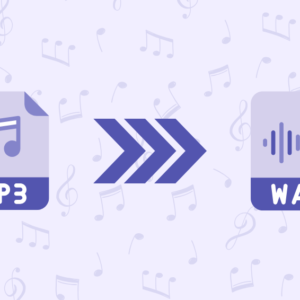In the fast-paced world of modern business, effective workforce management is more critical than ever. One of the key components of this management is scheduling. Gone are the days where scheduling meant manually juggling a calendar or using spreadsheets, which can lead to errors and inefficiencies. Enter Employee Scheduling Software—a powerful tool that can revolutionize how businesses manage their workforce. In this article, we will explore the numerous benefits of Employee Scheduling Software and how it can streamline operations, improve employee satisfaction, and boost overall productivity.
What is Employee Scheduling Software?
Employee Scheduling Software is a digital solution designed to help businesses create, manage, and optimize employee work schedules. This software automates the scheduling process and provides features that allow for real-time updates, employee availability tracking, and communication. Whether you run a small business or a large enterprise, this tool can significantly enhance how you manage your workforce.
Key Benefits of Employee Scheduling Software
Increased Efficiency
One of the most immediate benefits of Employee Scheduling Software is the increase in efficiency. Traditional scheduling methods can be time-consuming and prone to human error. With scheduling software, you can automate many tasks that would otherwise take hours to complete.
- Automated Scheduling: The software can automatically generate schedules based on employee availability, preferences, and business needs. This automation saves time and reduces the likelihood of errors.
- Integration with Other Systems: Many scheduling tools integrate seamlessly with payroll, HR, and project management systems, streamlining operations across departments.
Cost Reduction
Effective scheduling can lead to significant cost savings. By utilizing Employee Scheduling Software, businesses can minimize labor costs and optimize their workforce.
- Reduced Overtime: The software helps prevent over-scheduling, which can lead to costly overtime pay. By ensuring that shifts are adequately covered without excess hours, businesses can save money.
- Better Resource Allocation: You can allocate resources more effectively by understanding which employees are available and when. This leads to better staffing and reduced costs associated with understaffing or overstaffing.
Improved Employee Retention
Employee satisfaction plays a crucial role in retention rates. The benefits of Employee Scheduling Software extend to employee morale and job satisfaction.
- Flexible Scheduling Options: Employees appreciate having control over their schedules. Many scheduling tools allow employees to request shifts, swap with colleagues, or indicate their availability easily.
- Work-Life Balance: By allowing more flexibility in scheduling, businesses can help employees achieve a better work-life balance, leading to higher retention rates.
Enhanced Productivity
Employee productivity often hinges on effective scheduling. Employee Scheduling Software can play a vital role in ensuring that employees are scheduled optimally.
- Task Management: The software can help managers assign tasks based on employee skills and availability, ensuring that the right person is in the right role at the right time.
- Real-Time Adjustments: In today’s dynamic business environment, schedules may need to change rapidly. Employee scheduling software allows managers to make real-time adjustments, ensuring that productivity is maintained.
Reduction of Scheduling Conflicts
Scheduling conflicts can lead to frustration among employees and disrupt business operations. Employee Scheduling Software helps mitigate these issues.
- Availability Tracking: The software provides a clear overview of employee availability, minimizing misunderstandings and conflicts related to scheduling.
- Conflict Alerts: Many tools can alert managers to potential scheduling conflicts, allowing for proactive resolution before they escalate.
Better Communication
Effective communication is essential for any organization, and scheduling software enhances communication surrounding shifts and scheduling changes. Additionally, features like the ability to find phone number owner can streamline communication by quickly identifying and connecting with the right contacts when needed.
- Centralized Communication: Scheduling software acts as a central hub for all scheduling-related communications, making it easier for employees to stay informed.
- Notifications and Alerts: Employees can receive real-time notifications about schedule changes, ensuring they are always up to date.
Data-Driven Insights
Employee Scheduling Software often includes analytics and reporting features that provide valuable insights into workforce management.
- Labor Trends: By analyzing data over time, businesses can identify trends in labor needs, helping them make informed decisions about future scheduling.
- Performance Metrics: Managers can track employee performance and productivity metrics, leading to better decision-making and planning.
Enhanced Compliance
For businesses operating in regulated industries, compliance with labor laws and regulations is crucial. Employee scheduling software can assist in maintaining compliance.
- Automated Compliance Checks: Many scheduling tools have built-in compliance features that alert managers to potential violations of labor laws regarding hours worked, breaks, and overtime.
- Accurate Record-Keeping: Scheduling software can maintain accurate records of hours worked by employees, which is essential for compliance with wage and hour laws.
Scalability
As businesses grow, their scheduling needs become more complex. Employee Scheduling Software is designed to scale with your business.
- Adaptability: Whether you have a handful of employees or hundreds, scheduling software can accommodate your needs and grow alongside your organization.
- Customizable Features: Many tools offer customizable features that can be tailored to suit specific business requirements, making them suitable for various industries.
Increased Accountability
With the use of scheduling software, accountability among employees improves significantly.
- Transparent Scheduling: Employees can view their schedules and any changes in real-time, which fosters a sense of responsibility for their shifts.
- Performance Tracking: Managers can easily track attendance and punctuality, helping to enforce accountability among team members.
Conclusion
The benefits of Employee Scheduling Software are vast and multifaceted. From increased efficiency and cost reduction to improved employee retention and productivity, this tool is an invaluable asset for businesses of all sizes. By automating and optimizing the scheduling process, organizations can enhance communication, reduce conflicts, and ultimately create a more satisfied and engaged workforce.
As businesses continue to evolve, adopting technological solutions like employee scheduling software will be essential for staying competitive. By implementing this software, organizations can ensure that they are not only meeting the needs of their employees but also positioning themselves for long-term success.
In the ever-changing landscape of workforce management, Employee Scheduling Software stands out as a critical tool that can drive efficiency, cost savings, and employee satisfaction. Investing in such technology is not just a decision for today but a commitment to a more productive and harmonious workplace in the future.






